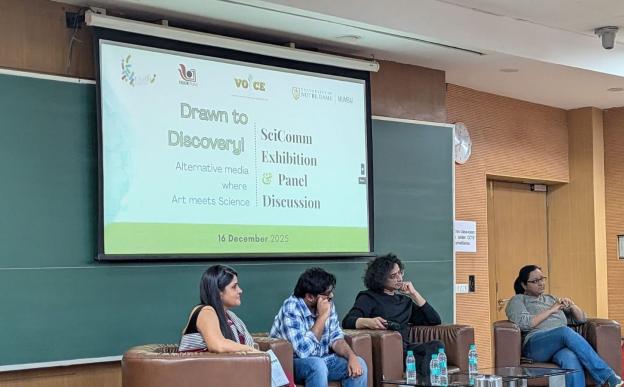Researchers look for high-energy light from gravitational-wave candidates in LIGO-Virgo-KAGRA Observation Runs with India’s AstroSat-CZTI
The Indian Institute of Science Education and Research (IISER) Pune on Tuesday launched the VOICE Fellowship 2025
Pune/

![Simulated electromagnetic (EM) emission from accreting binary massive black hole during the late inspiral phase. [NASA/GSFC]; Credits: https://svs.gsfc.nasa.gov/13086/ Simulated electromagnetic (EM) emission from accreting binary massive black hole during the late inspiral phase.](/sites/researchmatters/files/styles/large_front_800x320/public/BH-Merger.png?itok=NUlnJSYY)
![A representative image of a galaxy, M82 pictured here. [Image Credits: NASA, ESA, and The Hubble Heritage Team (STScI/AURA) / Public domain] AstroSat discovers tell-tale signs of cosmic evolution from a young, dynamic galaxy](/sites/researchmatters/files/styles/large_front_800x320/public/galaxy_24aug.jpg?itok=ywCZi7Oh)